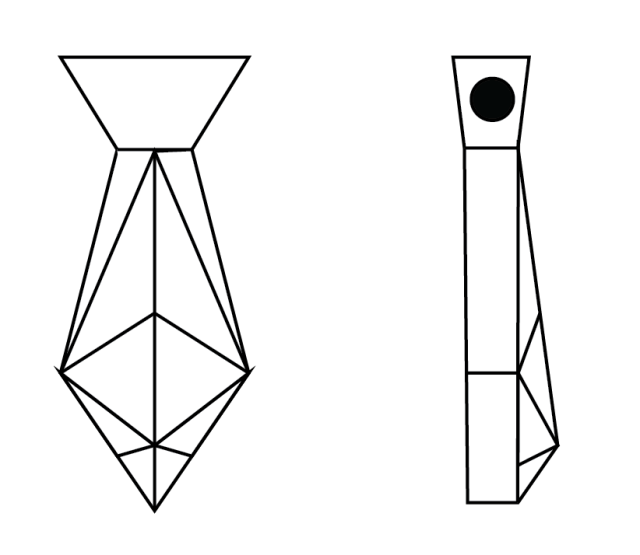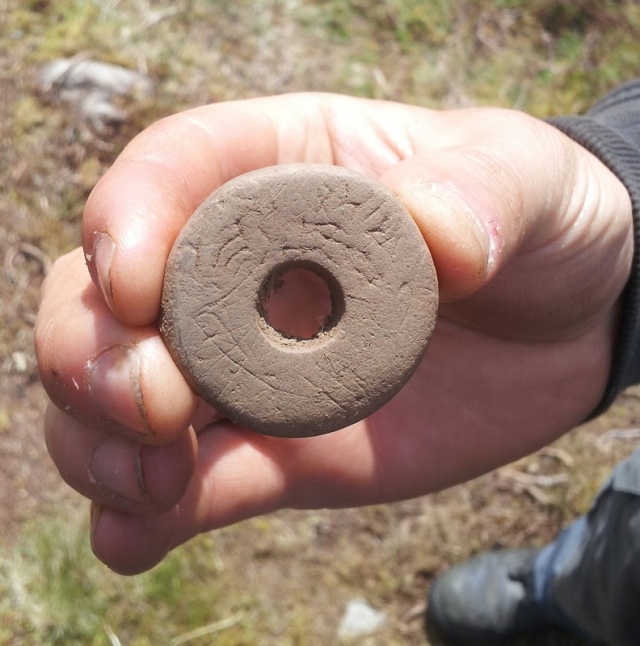I was doing a fair amount of reading this week and came across a chapter that discussed the overwhelming influence photography has had on art, history, and museums. You can see how it would have a large influence pretty easily, but it brought up a lot of good points I’d not really thought of before, so I thought I would post about it.
The work of Louis-Jacques-Mandé Daguerre was presented to the Institut de France on August 19, 1839. Daguerre had created what we know as a daguerreotype (hence the name), which was a silver-plated piece of copper that was treated with fumes to make it light-sensitive. It was then exposed through a camera and the first photographs were created.
At the same general time, Henry Fox Talbot had invented the photographic calotype or talbotype, which was a piece of paper coated with silver iodide and then exposed for as long as necessary to create an image.
Interestingly, Samuel Morse (known best for his invention of the telegraph and Morse Code), was one of the first people to introduce the daguerreotype to the US, where it quickly caught on. The calotype/talbotype was less popular, because it required much longer exposure times than the daguerreotype.
 All this happened within a few years, and the result had an enormous influence on Western culture. Many first photographs were produced in that time, such as the Boulevard du Temple (1838, pictured right), which is believed to be the first photograph (or at least the earliest surviving one with a human being in it. It’s really more of a cityscape, but there are two individuals towards the bottom, one having his boot polished by the other.
All this happened within a few years, and the result had an enormous influence on Western culture. Many first photographs were produced in that time, such as the Boulevard du Temple (1838, pictured right), which is believed to be the first photograph (or at least the earliest surviving one with a human being in it. It’s really more of a cityscape, but there are two individuals towards the bottom, one having his boot polished by the other.
Photographs earned a fair amount of prestige for two main reasons: 1) they were incredibly detailed, often so much so that the image remained clear under a hand lens; and 2) they were perceived to capture the truth, nothing more, nothing less. Paintings could embellish or omit certain features, whereas photographs captured the truth of a person or scene.
Photography quickly destroyed two art forms that had recently gained prominence: miniature portraiture and reproductive engravings. Miniature portraits claimed to be truthful, detailed, and provide the owner with fairly high social status. Daguerreotypes could do the same thing, but to an even larger degree. It wasn’t so much that they were cheaper (because they weren’t, at least in the beginning), it’s that they did the job so much better. Reproductive engravings fell out of favour because they took longer and daguerreotypes could capture the detail much better. The market value for both art forms was destroyed very quickly and they never really recovered.
This doesn’t necessarily mean photography held a high status or that it gained favour overnight. One particularly good quote I’ve come across is that from Rosen and Zerner: “Many artists and critics affected to despise the new invention until… they decided they wanted photographs of their mothers,”
But photography also completely changed museums. Museums before photography had been invented or even before it gained traction were generally founded to house existing collections of original pieces that had been acquired one way or another. They weren’t meant to represent a discipline or a culture or a medium as a whole, they were more collections and cabinets of curiosities. They also often served as showcases for imperial power and national prestige, which is one reason why the non-western sections of art museums tend to be more ethnographic as a whole.
Once photography came out, anyone could make a print of any painting, sculpture, object, or piece of art, so long as they were willing and able to travel to the original to capture the photograph. Because of this, newer museums (i.e. post-photographic museums) were generally founded to create collections rather than house existing ones, and they placed a heavy emphasis on education.

© Victoria and Albert Museum
A good example was the South Kensington Museum, now called the Victoria and Albert Museum often seen as one of the first of these post-photographic museums. Their photographer, Charles Thurston Thompson, photographed nearly everything that was loaned to the museum. He also travelled to take photographs of other collections or objects being cast for installation. Thompson even photographed objects or architecture that were not usually on display. The late 12th century portico of the Santiago Cathedral in Spain, for example, was concealed behind later architecture and was therefore virtually unknown before Thompson photographed it (left).
A number of museums modelled themselves after the South Kensington Museum, including the Museum of Fine Art in Boston.
It also changed how art was displayed to the public. Museums rarely showed damaged or incomplete works prior to photography, but the appeal of truthfulness presented by photography drove museums to present pieces as they were, rather than as they felt the pieces should be. This led to a change in art conservation, where conservators needed to be skilled in photography as well as other art forms. This included complex forms of photography as well, such as infrared, x-ray, and ultraviolet.
I find the appeal of the truthfulness of photography interesting, since it is now so often suspect given the rise of Photoshop and other similar programs. Nowadays, we often feel that seeing the original is more truthful than seeing the photography, or seeing the landscape or subject photographed is more truthful than the photograph itself.
I have a fair amount of thoughts on all this, and a fair amount more that was in the chapter that I want to talk about, but I’m going to need another day or so to wrestle with them before I can post about it. In the meantime, if anyone else has thoughts or questions or comments, feel free to leave them below – I’d love to hear them!
All information in this post taken from:
Walsh, P. 2012. Rise and Fall of the Post-Photographic Museum: Technology and the Transformation of Art. In: Cameron, F. and Kenderdine, S. eds. Theorizing Digital Cultural Heritage: A Critical Discourse. London: The MIT Press, pp. 19-34.
Images from:
Boulevard du Temple: https://en.wikipedia.org/wiki/File:Boulevard_du_Temple_by_Daguerre.jpg















